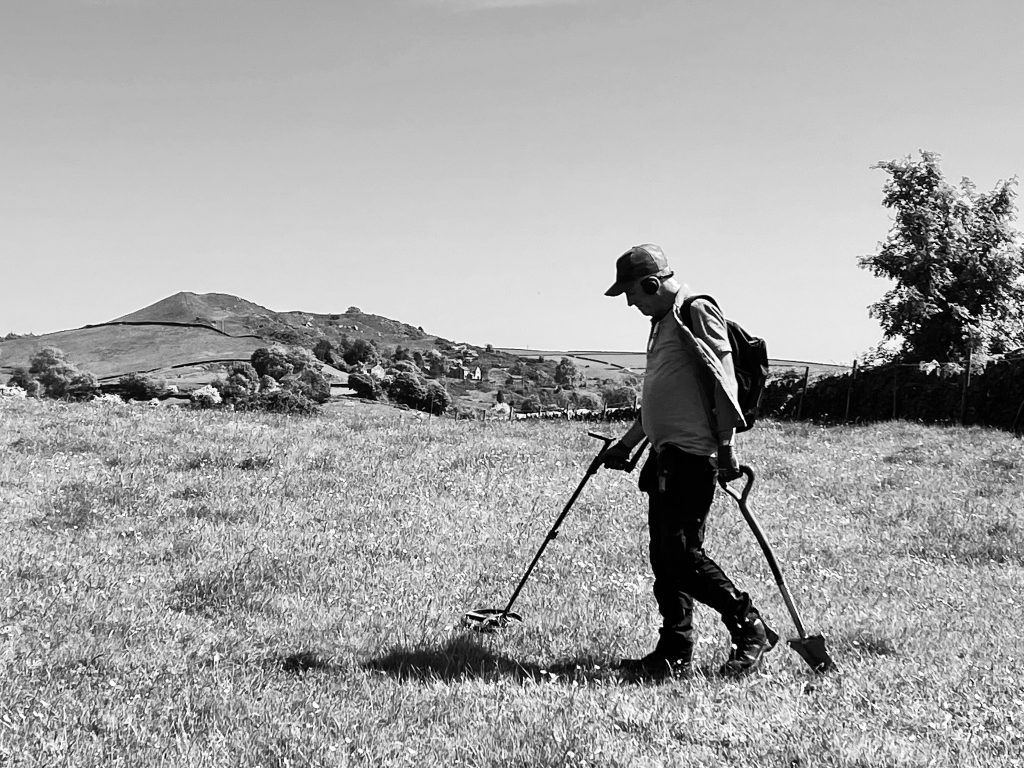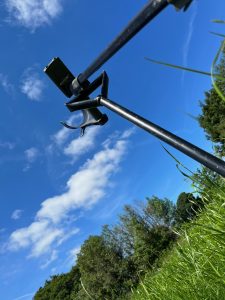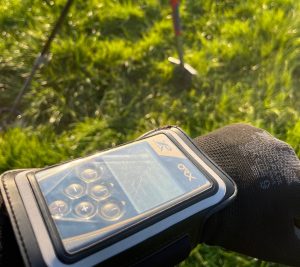
How good is the XP ORX Metal Detector? In the world of metal detecting brands are almost like religions, with the two most popular brands having their dedicated followers who would never us anything but their chosen brand, and anything else is just not worth consideration. You will see arguments raging online constantly between XP users and Minelab users.
The honest fact is that all metal detectors find metal, some better than others. I have said on here before to always avoid the cheap unknown brands sold on Amazon, yes buy a metal detector on Amazon, but just make sure that it is made by a well known mainstream brand.
The arguments between XP users and Minelab users rage on, but in reality it is fairly pointless because both brands find metal artefacts and coins, but for anyone to find great things they need to know and understand their metal detector and what it is telling them, it is a learning curve with any metal detector but once you understand it you will find things with it, as long as they are there to find that is, but that is a topic for a different day.
My metal detector of choice is the XP ORX, I came to buy one after reading some reviews and hearing some good comments about it. Before the ORX I had a Quest Q30 which was finding me things, but I had a nagging feeling that if I upgraded to something better then my finds rate would improve further. One of the things that appealed to me about the ORX and the Deus was the fact that they were so light. My Q30 was a hefty machine in comparison and swinging it all day was a bit of a workout. I looked at the Minelab Equinox models because they had a great reputation as well, but in the end they were as weighty as my Q30 so XP were going to get my money. My choice was between the Deus and the ORX, both very similar machines, the ORX is based on the Deus with the same power but a little simpler to use, but with less choice in settings to tinker with.
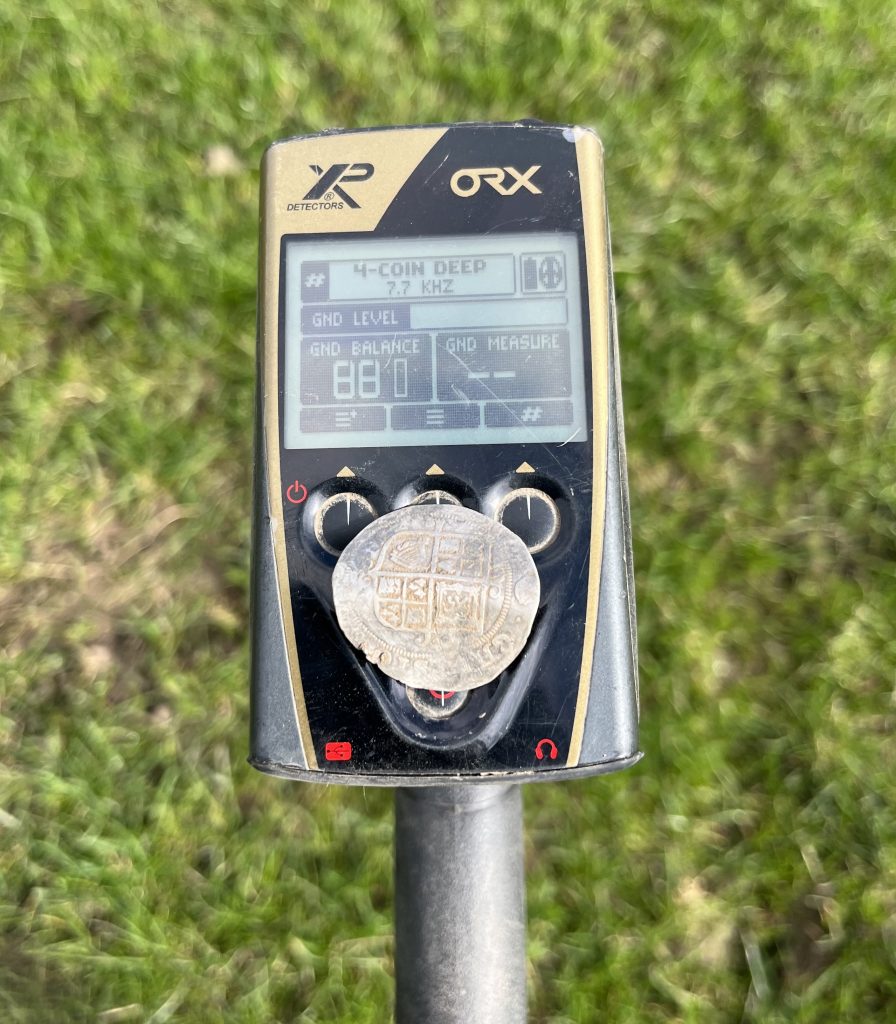
I also had to think about coils, the ORX and Deus use the same coils, there are the white HF (high frequency) coils and the black x35 coils that operate on a lower set of frequencies. In the end I opted for the simpler learning curve of the ORX coupled with the 11″ x35 coil to give greater ground coverage. I later bought an eliptical 9″ HF coil to supplement the x35 coil, but more about that later.
So is the XP ORX a good metal detector choice? Well, for me, yes. All the finds you see on this website were found by me, using my XP ORX, so yes it is an amazing metal detector. But let’s go back to the beginning when I first bought it.
For my first few times out with it I went out with both my new XP ORX and my existing Quest Q30. The Quest operates on just a single frequency, the ORX is a selectable multi frequency machine, so you choose a frequency to suit your requirements. Initially I couldn’t get used to it. It seemed almost too light, it was like having a mobile phone on the end of the stem, I kept going back to the Quest and leaving the ORX unused, but eventually I decided that after spending all that money on it I had better get used to it. So eventually I left the Quest in the boot of my car and persisted with the ORX and I am so pleased that I did. Not so long ago I took the Quest out and couldn’t believe how clunky and awkward is was to use, in comparison to the ORX.
But now lets talk about the ORX and its usability and controls. Essentially you have a lightweight stem and handle. On the bottom of the stem you attach the coil, and then the control unit sits clipped on to the top of the stem. There are no wires to get in the way or to add weight, the coil and the control unit are connected to each other wirelessly and the headphones also connect to the control unit wirelessly, so again no wires to get tangled up in. Because the control unit connects to both the coil and your headphones with wires, in XP terminology the control unit is actually called the remote control.
Because there are no wires you don’t even have to have the remote control sitting on the stem, you could keep it in your pocket if you wanted to, making the coil and stem even lighter. However I prefer to see the screen whilst I’m detecting so I usually mount it on the stem, or occasionally in a wrist mounted holder like the one in the photo.
When you first switch the ORX on, by briefly holding down the on/off button (top left), you are asked on the display whether you want to use the speaker in the remote control or not, but I always wear headphones so select no.
The screen then reverts to its main display screen as seen below.
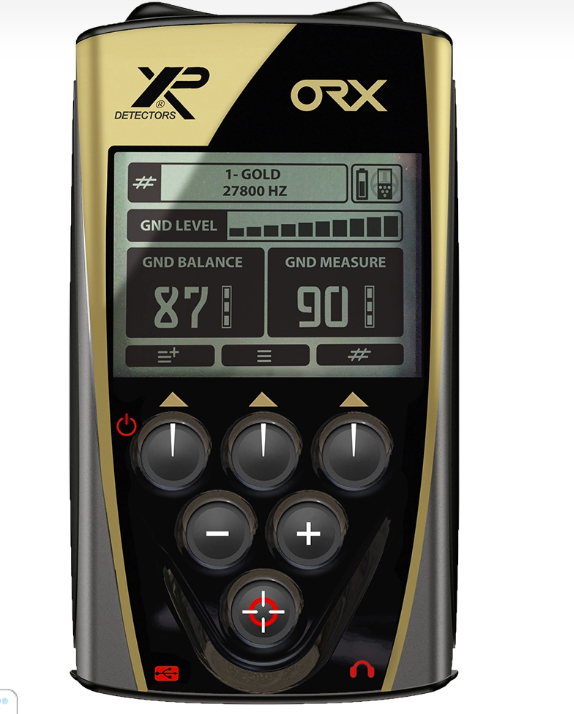
The first thing that you need to do is to pair your headphones to the remote control. You have to do this every time you switch on, but it only takes a few seconds, so it isn’t a problem. To do this tap the top left button to bring up a menu, use the middle top button to scroll down until headset is highlighted, then select this using the top left button. Hold your headphones close to the remote control and hold down to two buttons on your headphones for three seconds. When the screen reverts to the menu, your headphones are paired and working. Tap the top right button to return to the main screen.
Here you can change the program if you want to. You do this by tapping the top right button which scrolls through the available programs with each tap. Your choices are. Gold, Fine Gold, Coin Fast and Coin Deep. For most types of detecting you are probably going to be using Coin Fast or Coin Deep. When I first got my ORX I only used Coin Fast because I found Coin Deep a bit lively on some land. Now that I am used to the machine I only ever use Coin Deep, my advice is to get used to Coin Deep as soon as you can. You will find more with it.
Once you are in the program of your choice you can then adjust and fine tune settings to your personal preference for the land you are on. To do this tap the top centre button, this will bring up the adjustments available for that program.
For example in Coin Deep you can adjust the discrimination which is by default set to 7. I leave it here because I want to hear as much as I can and setting it higher could lead to you missing out on some items but the choice is yours. Use the + and – buttons on the middle row to adjust any settings.
Use the top middle button to scroll down to the next item on the menu list. This is sensitivity which is pre set to 90. I always take this up as high as the land will allow. I rarely have it set lower than 98 and sometimes its highest setting 99. Theoretically the higher the sensitivity the more it will react to metal items, but on highly mineralised ground or land contaminated with tiny pieces of iron it will need to be set lower otherwise it will drive you mad.
Next on the menu is Frequency, the options here will depend on your choice of coil. My 11″ coil can operate at 4 kHz, 7.7 kHz, 11.3 kHz, 17.2 kHz and 25.4 kHz. All these will find metal targets in the ground. Theoretically the higher the frequency the smaller the potential targets it can find, but that isn’t always the case, otherwise I would be running an XP high frequency coil that can operate at up to 80 kHz but more on that later. I run my x35 coil at 17.2 or 25.4 kHz.
Next on the menu is Iron Volume, this is a simple on or off. I just leave it switched to On.
Next on the menu is Reactivity, some manufactures refer to this as recovery speed. In simple terms a higher reactivity number allows the machine react more quickly allowing it to sort out good from bad signals in trashy ground, but you might lose a bit of depth at the same time. I tend to run it at 1 unless the ground is trashy or contaminated.
Those are my go to settings.
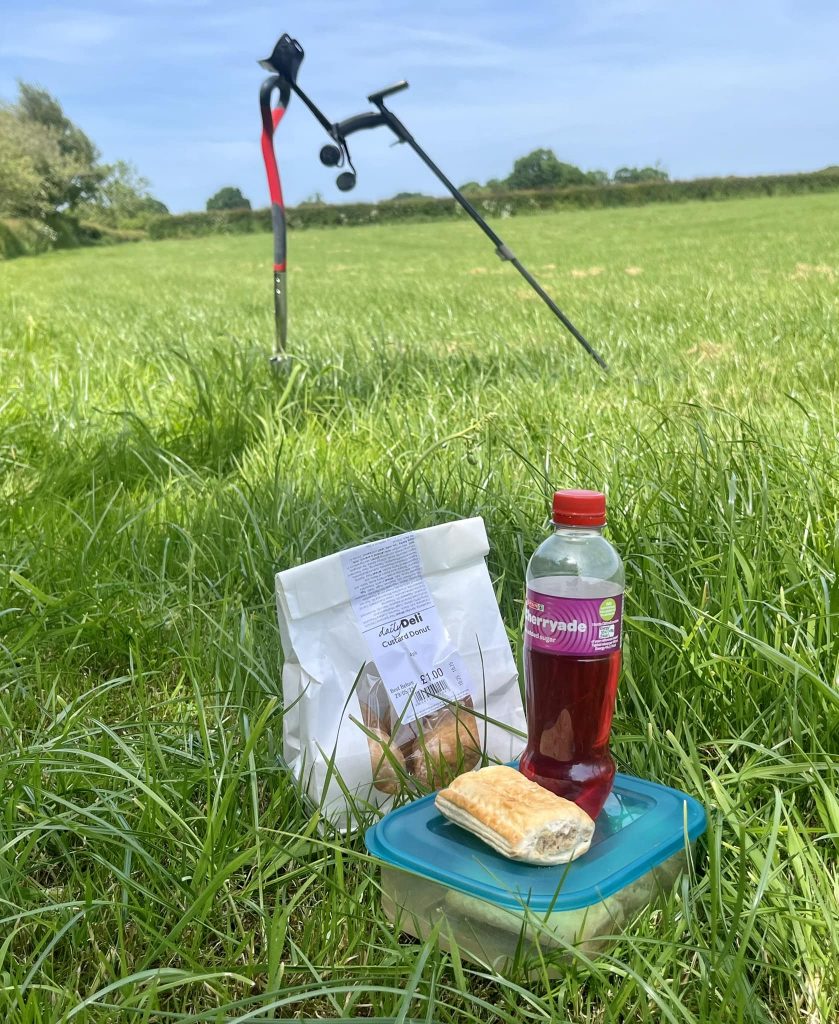
Once you have chosen your settings you can now start to detect. Some people detect faster than others, it might be a fast side to side swing or a fast walking pace, but you have to balance out covering ground without missing targets so I walk at a slow to medium pace with a medium swing rate. I make my swing as wide as I can comfortably do. Also remember to keep your coil as close to the ground as possible and try not to lift it up too much at the edge of each swing. Remember that the closer your coil is to the ground the more depth you will get, and the slower you swing and walk the more chance you have of the machine seeing a target (but at the expense of covering less ground).
With practice you will get used to using the detector and you will adopt a speed and style that works for you. You will also get used to what it is telling you. The ORX is primarily a tone machine, by that I mean that generally low tones are iron, mid tones could be interesting and high tones definitely require investigation. Then there are numbers that appear on the display of the remote control. These numbers vary according to conductivity, size, position etc and are only a guide, but in time you will get to know combinations of sounds and numbers that give you an indication of what you have found. Big numbers don’t necessarily mean a good find. Numbers below 40 are not usually good, unless the tone tells you otherwise. Numbers above 97 generally aren’t good either, but again tone is important. Whatever machine you use, you will dig far more junk than good stuff and as you get used to your machine, you the operator will discriminate on what you are seeing and hearing and make the decision whether to dig or not. Just a word of advice the numbers sometimes need a few moments to settle down. I have seen 99 flash up the display which isn’t a good number, only for it to then settle down to late 88, which is a better number, so give it a chance to settle.
So is the XP ORX a good metal detector? Yes absolutely, just look at some of my finds. I know that if I walk over a hammered silver coin, or a gold ring the ORX will find it, but so will lots of other metal detectors. The more telling question is.. Would I change my XP ORX for any other metal detector right now? Well if we look at the only two obvious upgrades from the ORX we are looking at either the Minelab Manticore or the XP Deus 2, again there are fans of both out there. I know Manticore owners who insist that they are the best metal detector, and I know Deus 2 owners who insist that their machine is the best metal detector. I also know people who have bought and used one and than switched to the other.
My original question was, how good is the XP ORX metal detector?
I have never used a Minelab Manticore so cannot comment on whether it is better than a Deus 2 or not. However I have used both the Deus 1 and the Deus 2. In fact my detecting buddy Bob has both of these and I have borrowed and used them both. Would I swap my ORX for either the Deus 1 or Deus 2? The answer is no, its not about money it is about the simple fact that i find more things with my ORX than I ever do with either of those. Of course with practice I might find that my finds rate increases once I had got used to, and learned the machine but Bob and I detect together all the time, he knows his Deus 2 very well, but I always find more with my ORX than he does, so for now I’m sticking to it, because for me it is right now, the best metal detector that money can buy.
Is there anything that I would criticise the ORX over? The only thing that I don’t like is that the mounting point for the remote control at the top of them stem isn’t great. If you are heavy handed and take it on and off all the time then it might just break. I’m not heavy handed but in 2 years have replace to mounting clip twice. Now I rarely take it off.
This leads to my other bugbear, the ORX isn’t waterproof, if it gets too wet it will die! I’m now on my second remote control in 2 years. One day I was out and it was raining hard so I popped the remote off and popped it in my pocket out of the rain. Unfortunately my waterproof pocket was collecting rain and the remote control died. My solution now? I tied a plastic sandwich bag over it and use it like that.
